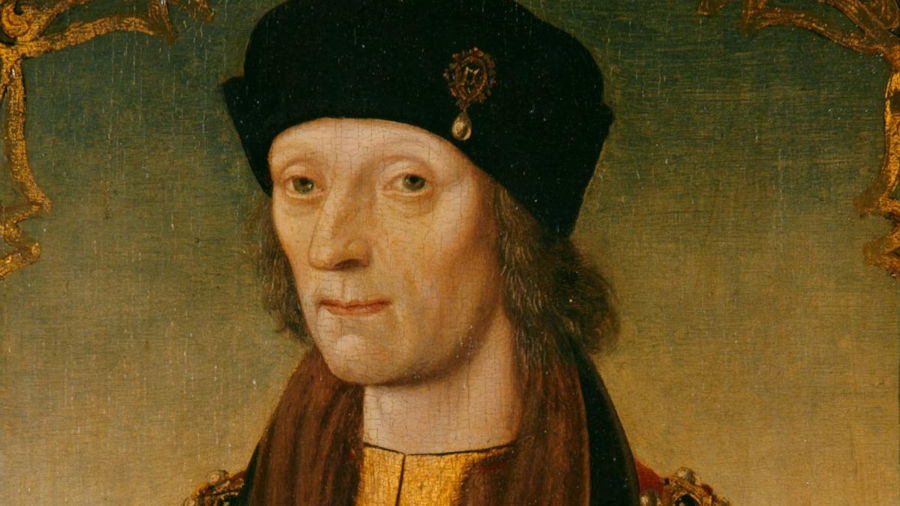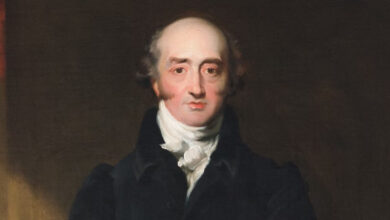
Podcast: Play in new window | Download
Subscribe: Spotify | Amazon Music | Youtube Music | RSS
Henry Tudor was born on 28 January 1457 during a period of turmoil and conflict over the succession of the English throne. He was the son of the Countess of Richmond, Lady Margaret Beaufort and Edmund Tudor, 1st Earl of Richmond, although Edmund died at Carmarthen Castle three months before Henry was born after being captured by Yorkists whilst fighting for Henry VI in South Wales.
Following the ascent to the throne of Edward IV in 1461, Edmund Tudor’s younger brother Jasper, who had sworn to protect Lady Margaret, who was only 13 years old at the time of Henry’s birth, went into exile overseas with the Yorkist William Herbert thus assuming guardianship of Margaret and the young Henry.
Henry lived in the Herbert household for the next eight years but in 1469, Richard Neville, Earl of Warwick switched sides and executed Herbert after he had been caught whilst fighting for the Yorkists. The following year, Warwick, who became known as The Kingmaker, restored Henry VI to the English throne and so Jasper was able to return from exile, whereupon he brought Henry to court.
His time at court was short-lived though as in 1471 Edward IV regained the throne forcing the young Henry and other Lancastrians to flee to Brittany where he remained under the protection of Francis II, Duke of Brittany for the next 14 years.
Although now married to the Yorkist Lord Stanley, Henry’s mother, in 1483, began promoting the idea that Henry was a viable alternative to Richard III as King of England. In an attempt to gain the throne, Henry pledged to marry Elizabeth of York, the eldest daughter of Edward IV, but when he tried to land in England it was clear that his conspiracy to gain the throne had been discovered and so he fled to France, avoiding an attempt by Richard III to extract him.
The French supplied Henry with troops and equipment to help him in a second invasion attempt and so Henry sailed to Wales with a small force of men and marched towards England alongside his uncle Jasper. Due to his descent from Welsh royalty, he managed to amass some 5000 troops along the way. The plan was to take Richard by surprise and Henry managed to do just that when although outnumbered he won a decisive victory at the Battle of Bosworth Field on 22 August 1485, helped considerably by the fact that some of Richard III’s key allies such as Henry Percy either switched sides or left the field of battle. Crucially, Richard III was killed at Bosworth and so came to an end the wars between the houses of York and Lancaster, wars that became known as the Wars of the Roses. On 30 October 1485, Henry was crowned King Henry VII at Westminster Abbey.
Henry honoured his pledge to marry Elizabeth of York and did so on 18 January 1486 thus joining together the two houses. In doing so Henry took the red rose emblem of the House of Lancaster and the white rose emblem of the House of York and created the red and white Tudor Rose and took that as the emblem of the House of Tudor.
Although he was mostly successful at cementing his claim to the throne and that of any children he would have, Henry still faced rebellions that had to be dealt with over the years that followed such as by the Stafford brothers in 1486 and by Lambert Simnel in 1487. One of the most dangerous was when in 1490, a young man called Perkin Warbeck appeared, claiming to be Richard of Shrewsbury, the younger of the so-called ‘Princes in the Tower’ who were the only surviving sons of Edward IV and his wife Elizbeth Woodville and who were thought to have died, possibly even murdered by Richard III, whilst held prisoner in the Tower of London. Warbeck, supported by Edward IV’s sister, Margaret, led invasion attempts in 1491 and 1495. He also persuaded James IV of Scotland to invade England in 1496. However, when Warbeck landed in Cornwall in 1497, he was captured and executed.
Henry set about building bridges and although he was drawn into a war with France, he soon made peace and although hostility had existed between England and Scotland for years, he managed to conclude a peace treaty in 1499 which was followed in 1502 by a treaty for the marriage of James IV to Henry’s daughter, Margaret which James probably agreed to because there was now also a strong alliance in place between England and Spain after Catherine of Aragon married Prince Arthur on 14 November 1501.
Although his experiences during his early life taught Henry to be cautious and secretive and to depend upon calculation and policy rather than passion and affection it is thought that he could also be gracious and that he disliked bloodshed. He very rarely showed emotion and so it took the court by surprise when he openly sobbed and displayed intense grief when he learned of Arthur’s death on 2 April 1502 from a respiratory illness known at the time as the English sweating sickness. The following year on 11 February, Henry was struck another blow when his beloved Queen, Elizabeth of York died in childbirth.
As well as having to deal with intense grief all over again, the death of his son had also put Henry into a bit of a quandary as he needed to retain the treaty with Spain. The conclusion was that following the death of Elizabeth of York, Henry was free to marry Catherine himself, or she could marry his other son, Henry, the future Henry VIII. Henry sought a papal dispensation from Pope Julius II as such a union would not normally be allowed by the Catholic Church. Although the dispensation was granted, no marriage took place during Henry’s lifetime.
Henry did make half-hearted attempts to marry again with the intent of producing more heirs as the only one that now existed was his son Henry as unusually for the time, the King did not have any mistresses or any illegitimate children, and so the Tudor line was in a precarious state. Some suitors were found, but none lived up to the image of Elizabeth and in reality, her death had broken his heart. He never remarried.
Records that exist today in the British National Archives indicate that Henry VII was a devoted family man and in the later years of his life, he had to witness his family crumble away. He even had to escort his elder daughter Margaret to the Scottish border to ensure the marriage between her and James IV of Scotland could take place thus keeping the treaty with Scotland in place. He would never see her again. On 21 April 1509, Henry VII died at Richmond Palace from tuberculosis at the age of 52 and was buried next to his wife, Elizabeth of York in a chapel he had commissioned inside Westminster Abbey.
Podcast: Play in new window | Download
Subscribe: Spotify | Amazon Music | Youtube Music | RSS




